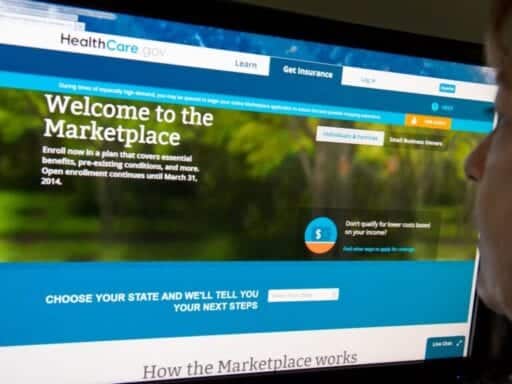Insurers are doing just fine with Obamacare after the penalty for not having insurance was repealed.
We’ve gotten through one year of Obamacare without the individual mandate and the results are clear: the insurance market did not collapse.
Insurers are doing just fine, according to new data from the Kaiser Family Foundation. The margins they’re seeing per individual customer (the difference between the premiums they’re paid and the medical claims they pay out) look as healthy as they have in years. Despite fears the lack of the mandate would drive healthier people out of the market, there is little evidence that’s actually happened.
/cdn.vox-cdn.com/uploads/chorus_asset/file/19577957/9196_06_Figure_2.png) Kaiser Family Foundation
Kaiser Family FoundationInstead, the individual market continues to go through a soft attrition: Premiums continue to increase, but only slightly, and enrollment is shrinking, again slightly. It’s not a death spiral, but the market is slowly being winnowed to a core customer base: People who get federal assistance to cover their premiums, and unsubsidized customers who don’t receive that help but need good health insurance.
”Before the ACA, a lot of people who were sick or low-income were unable to buy their own coverage on the individual market,” Cynthia Cox, who studies the Obamacare markets for KFF, says. “Now we are seeing that the market is working for low and moderate-income people who are able to get a subsidy, but prohibitively expensive for some upper-middle income people who do not qualify for financial help.”
Nearly 10 years after Obamacare became law, the story of the insurance markets it created looks something like this: At first, insurers had no idea what to expect from this new customer base, now that people could no longer be denied health coverage because of preexisting conditions. They probably set their premiums too low in the first few years, which is why rates kept rising at a significant clip. But then things started to settle down. Insurers had figured out the market, so premium increases in the past few years have been relatively modest.
The Obamacare markets have always been heavily skewed toward the subsidized customers, who get a significant break on their premiums with federal tax credits, and that became only more true as the years went on. The subsidized customers are partly or fully protected from premium hikes, so they kept signing up.
It was the unsubsidized customers, people making 400 percent of the federal poverty level or more, who faced the full brunt of those increases. They have been steadily dropping out of the market; in 2019, according to the KFF data, enrollment for unsubsidized consumers dropped by 10 percent, while overall enrollment dipped by just 5 percent.
Those trends have been underway for a few years. The worry during the Trump administration has been that policy changes made by Congress or the White House would deteriorate the market to a point of no return. Things like ending the cost-sharing reduction payments and other subsidies for insurers. Or the repeal of the individual mandate penalty in the 2017 tax bill.
In theory, the end of the mandate fine would have given healthier people who don’t think they need health insurance a free pass to drop coverage. But that doesn’t seem to be happening: According to KFF, if you look at days spent in the hospital as a metric, 2019 enrollees have actually been a smidge healthier than in previous years.
/cdn.vox-cdn.com/uploads/chorus_asset/file/19577955/9196_06_Figure_5.png) Kaiser Family Foundation
Kaiser Family FoundationThe Obamacare markets have proven surprisingly resilient, despite the uncertainty when they opened and the concerns about how Trump might damage them. The question now is whether they survive their next threat: a lawsuit challenging the constitutionality of Obamacare, once again, which has the support of the Trump administration.
Left to its own devices, the law appears to be on stable ground.
This story appears in VoxCare, a newsletter from Vox on the latest twists and turns in America’s health care debate. Sign up to get VoxCare in your inbox along with more health care stats and news.
Join the conversation
Are you interested in more discussions around health care policy? Join our Facebook community for conversation and updates.
Author: Dylan Scott
Read More



